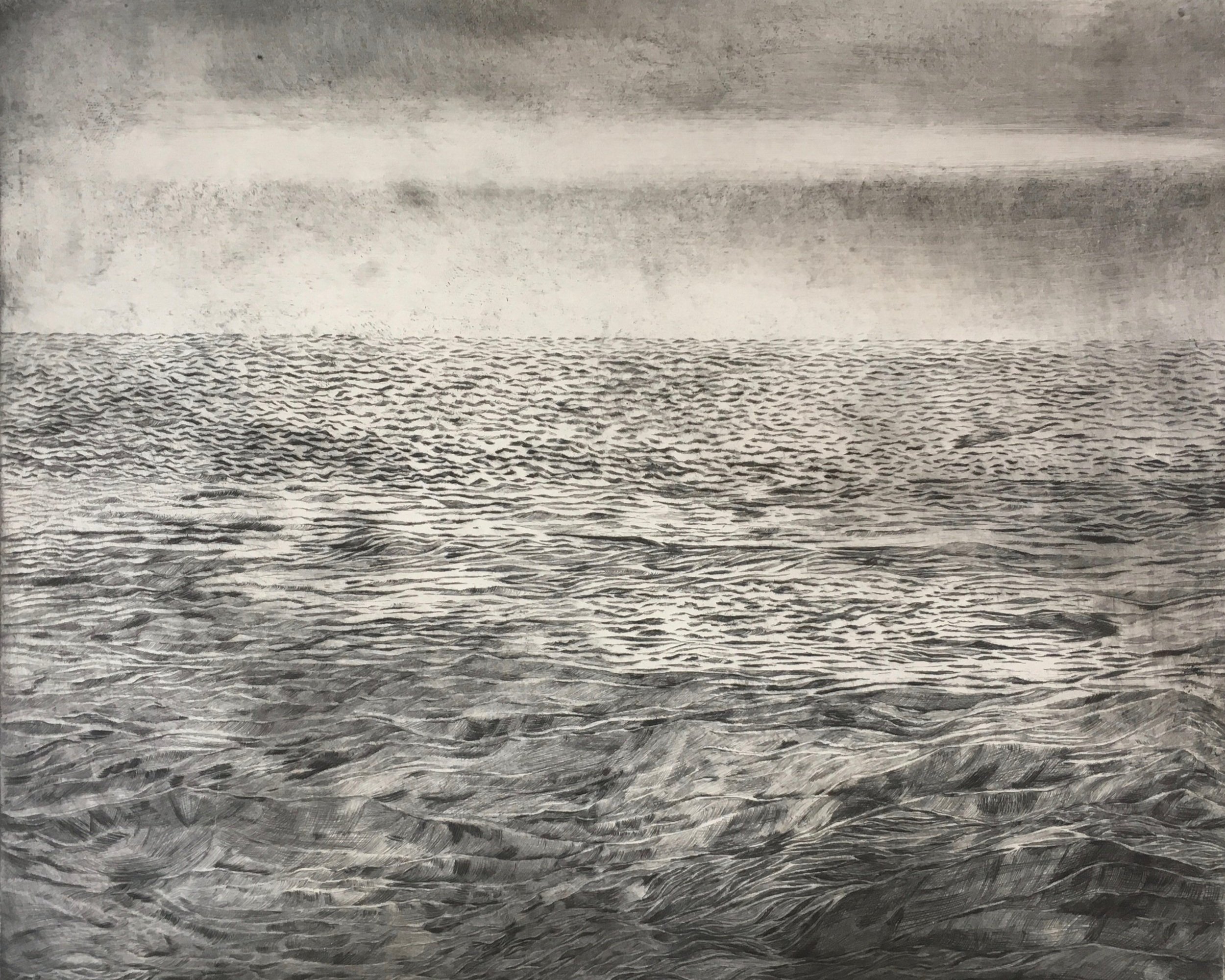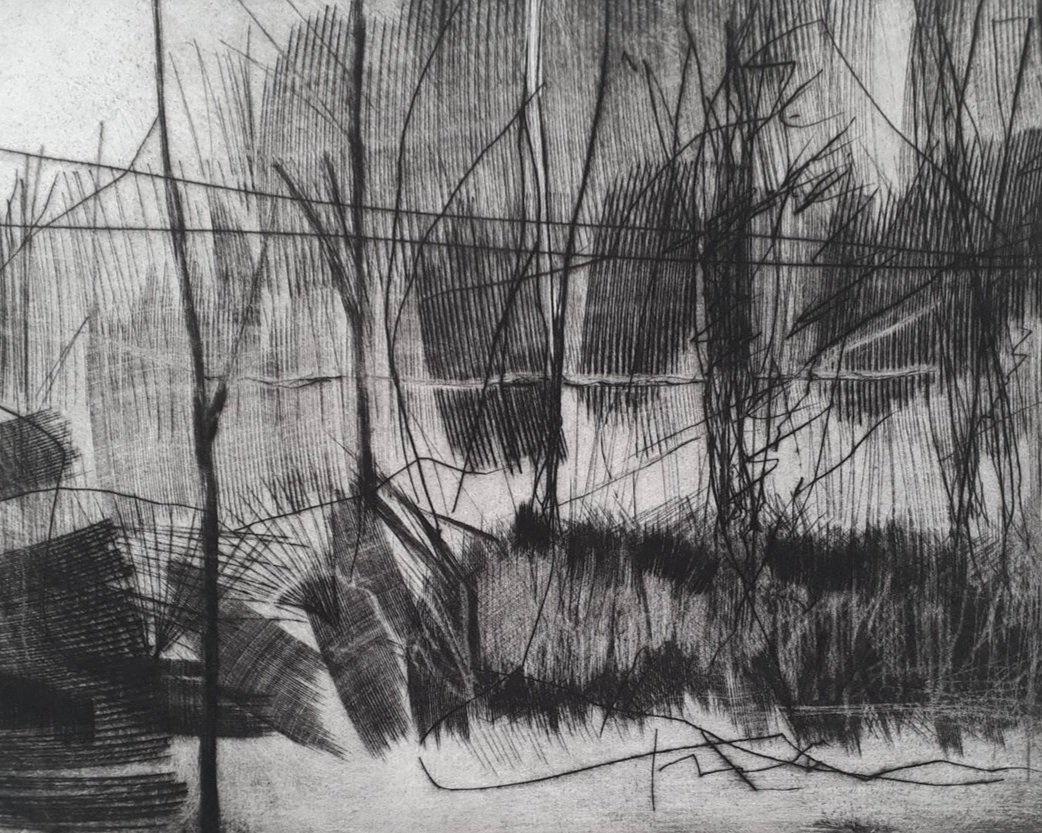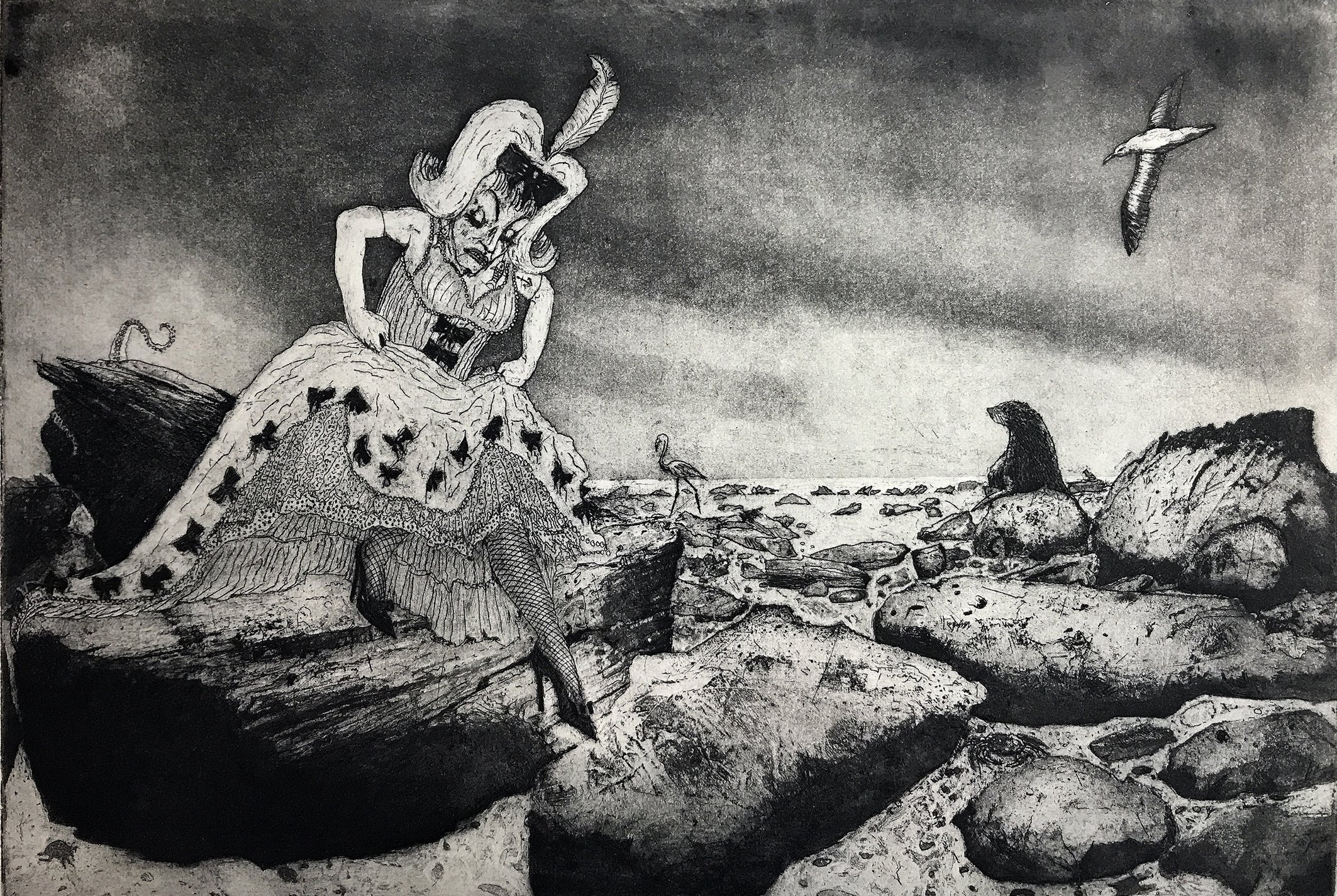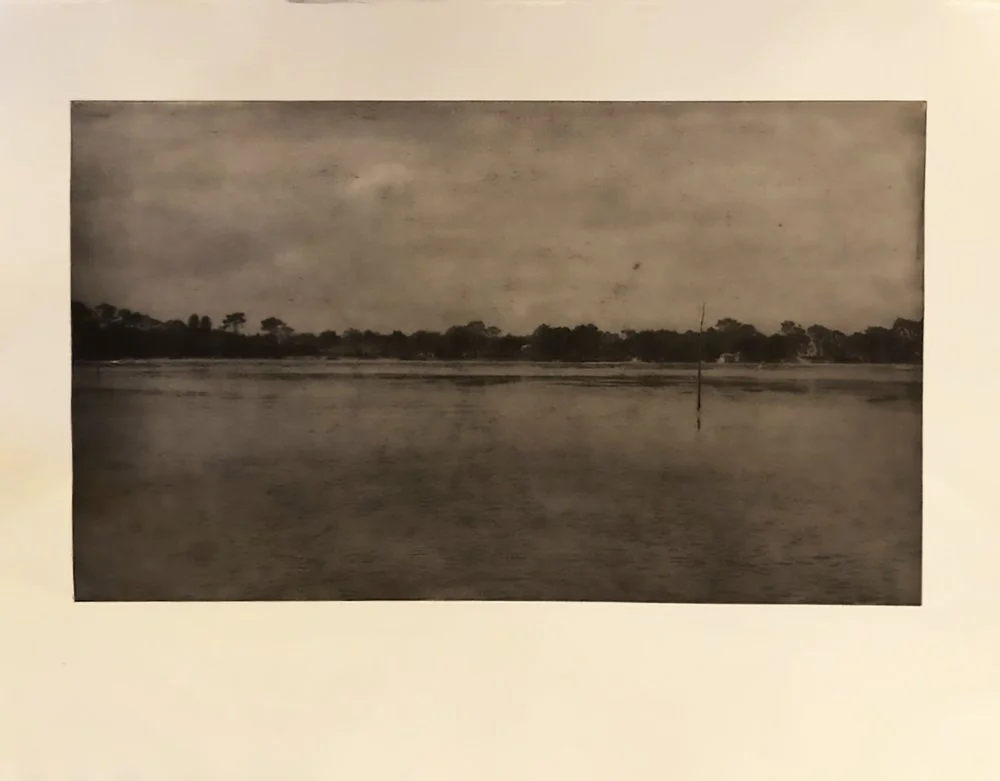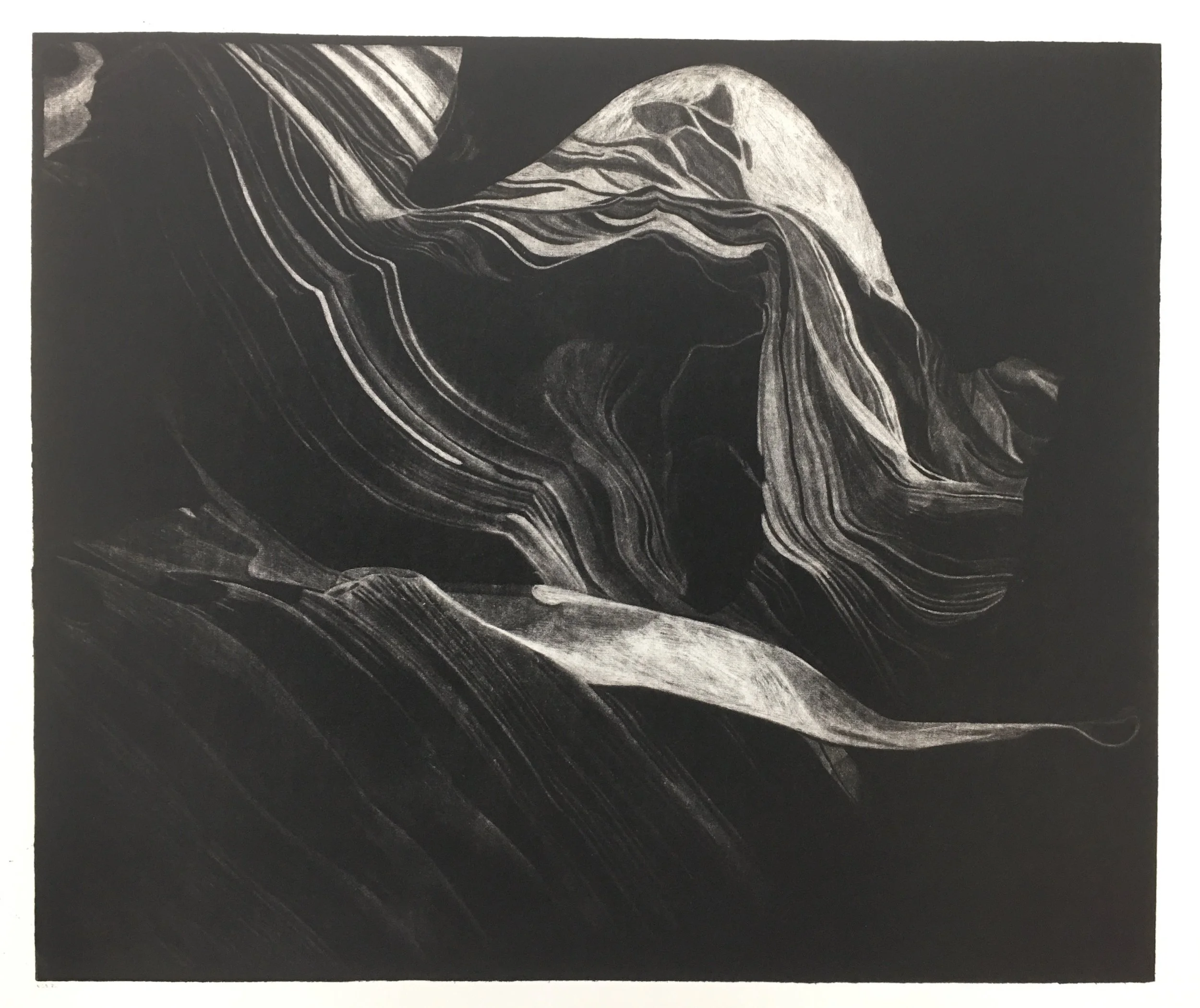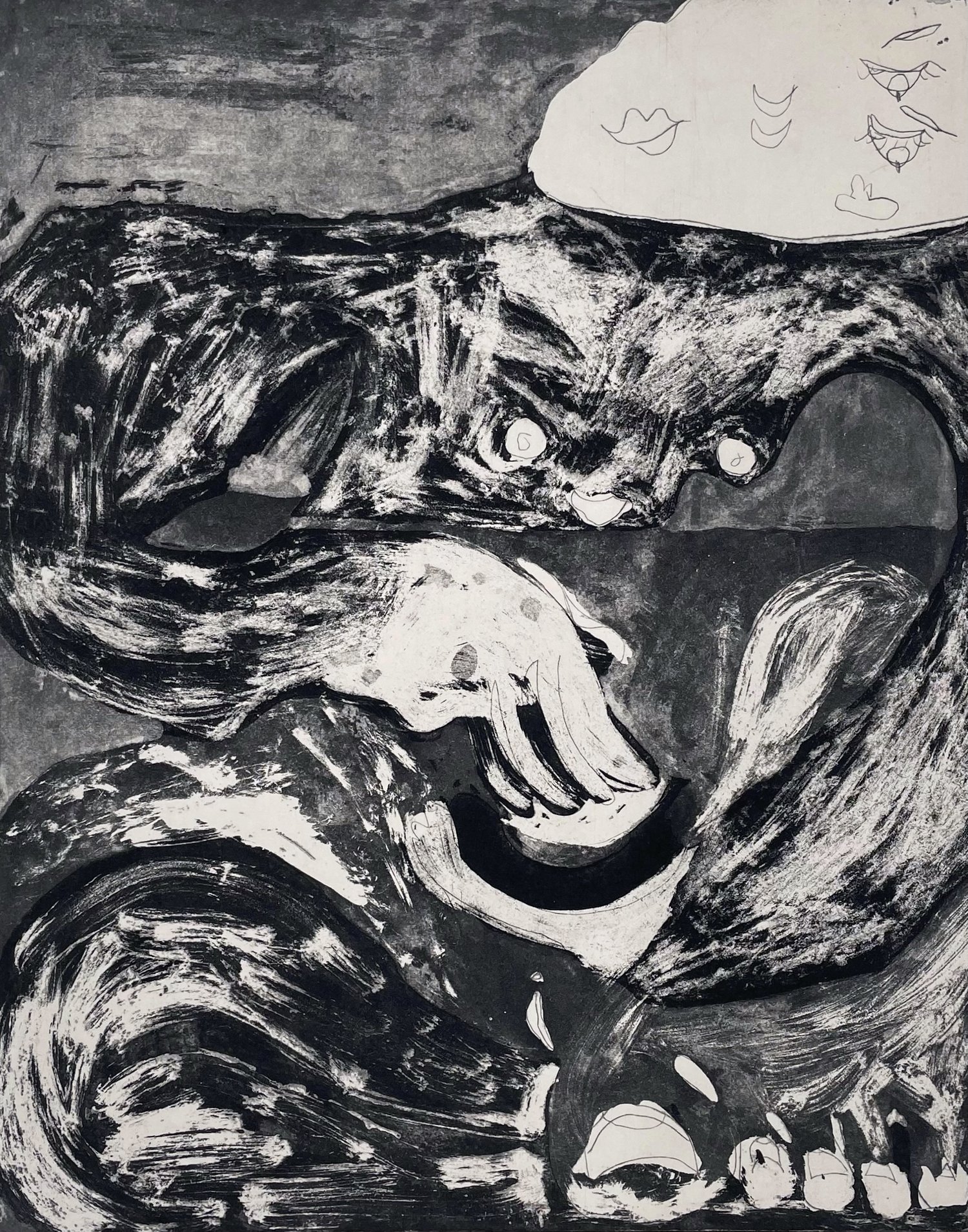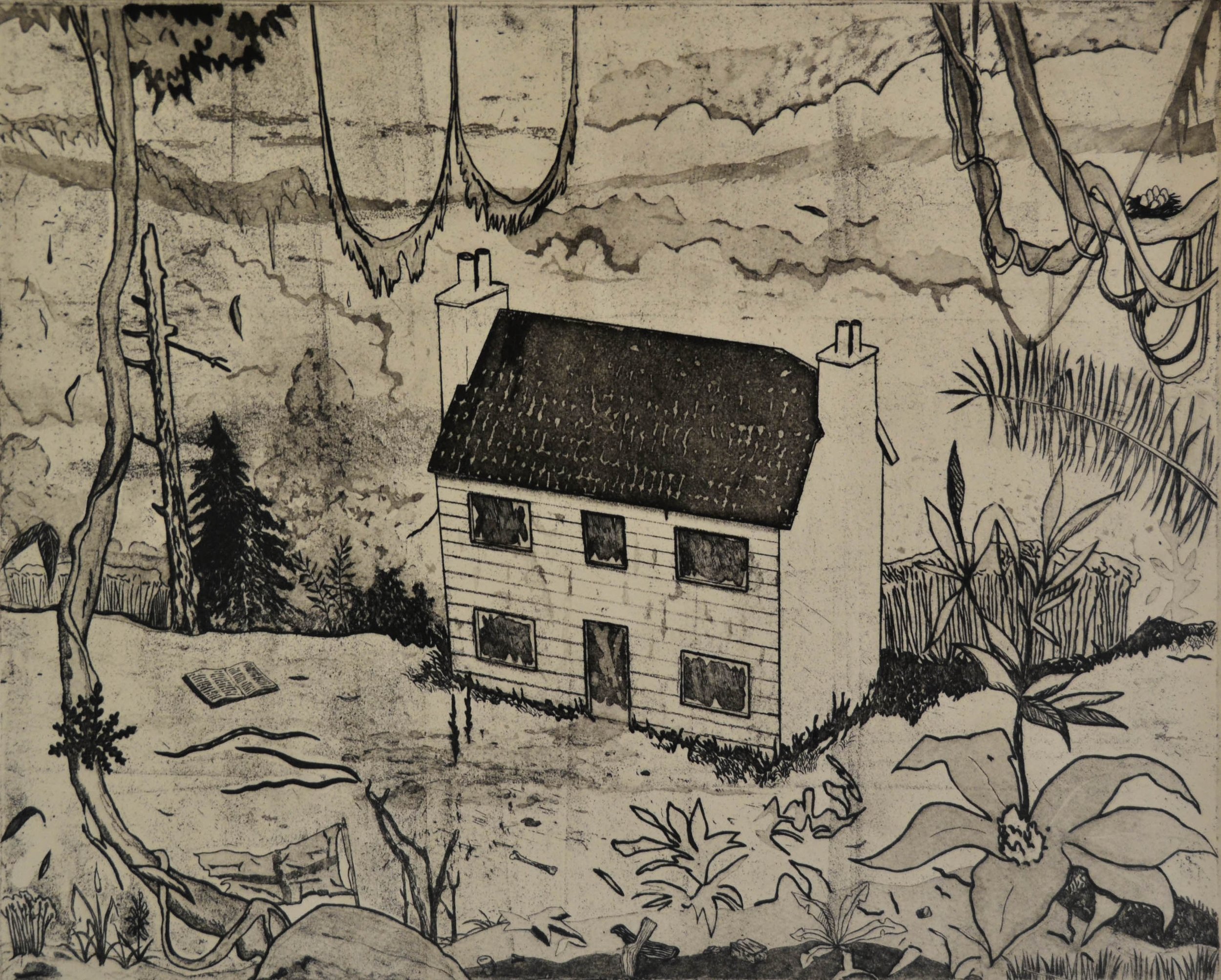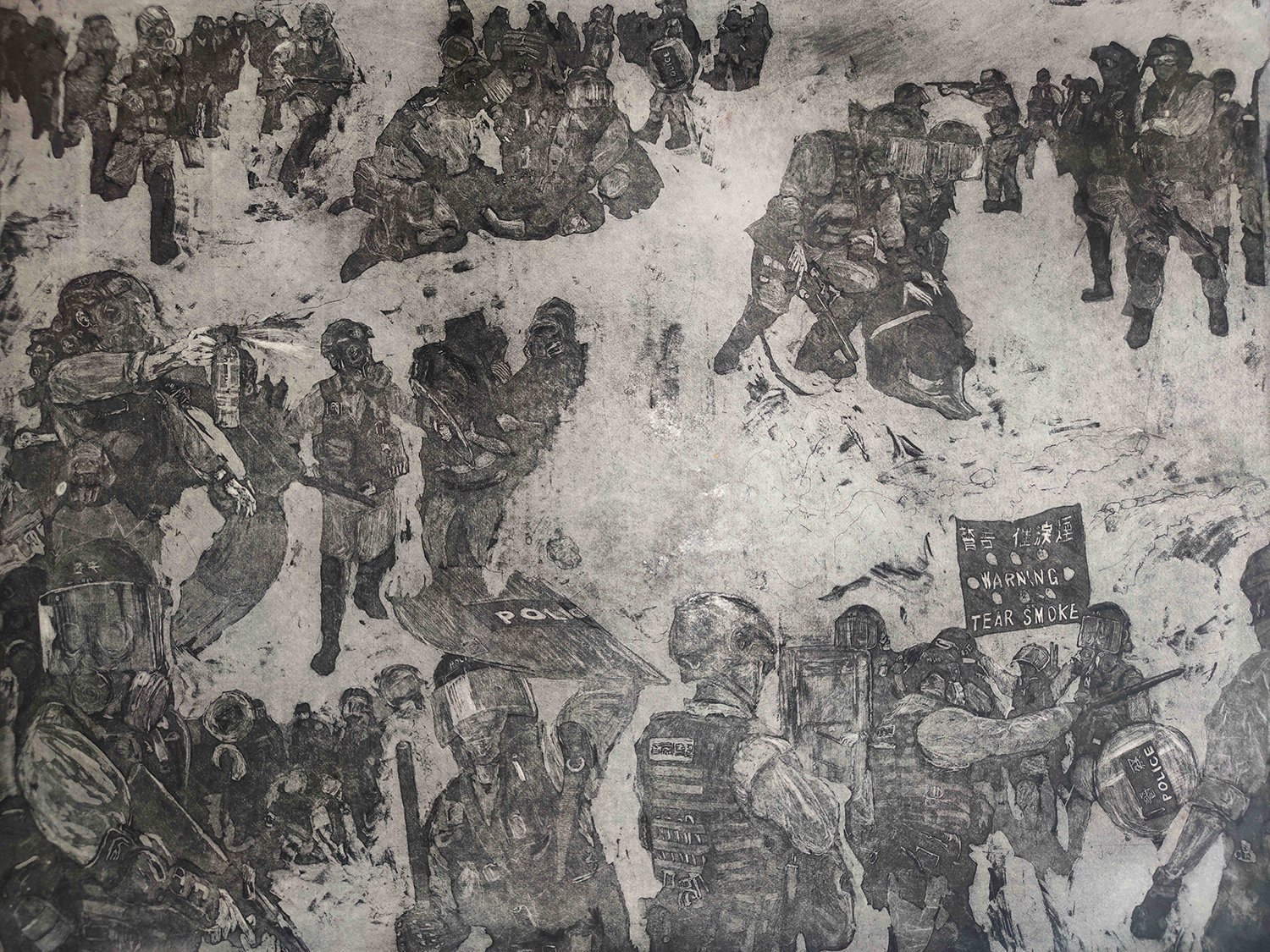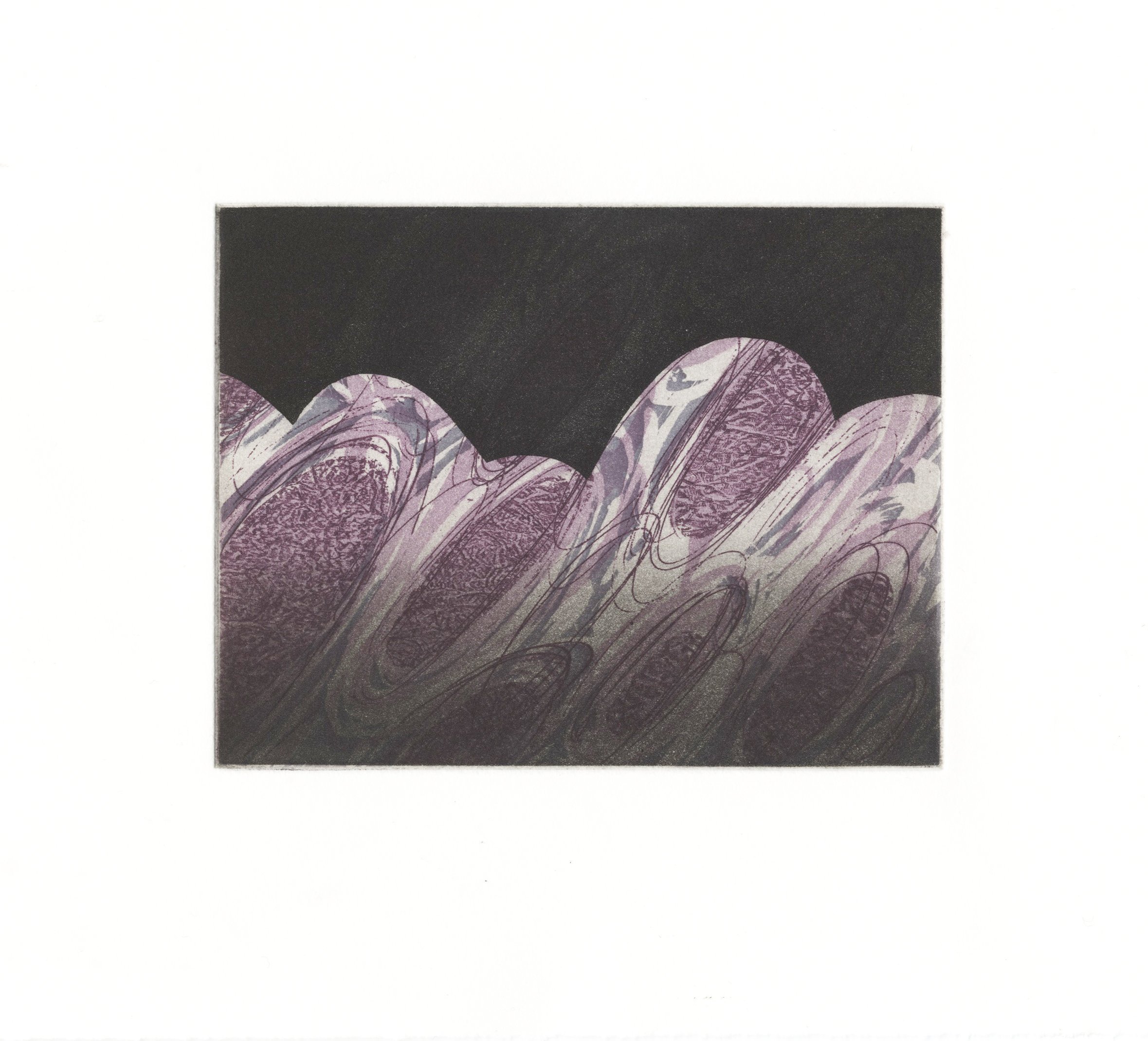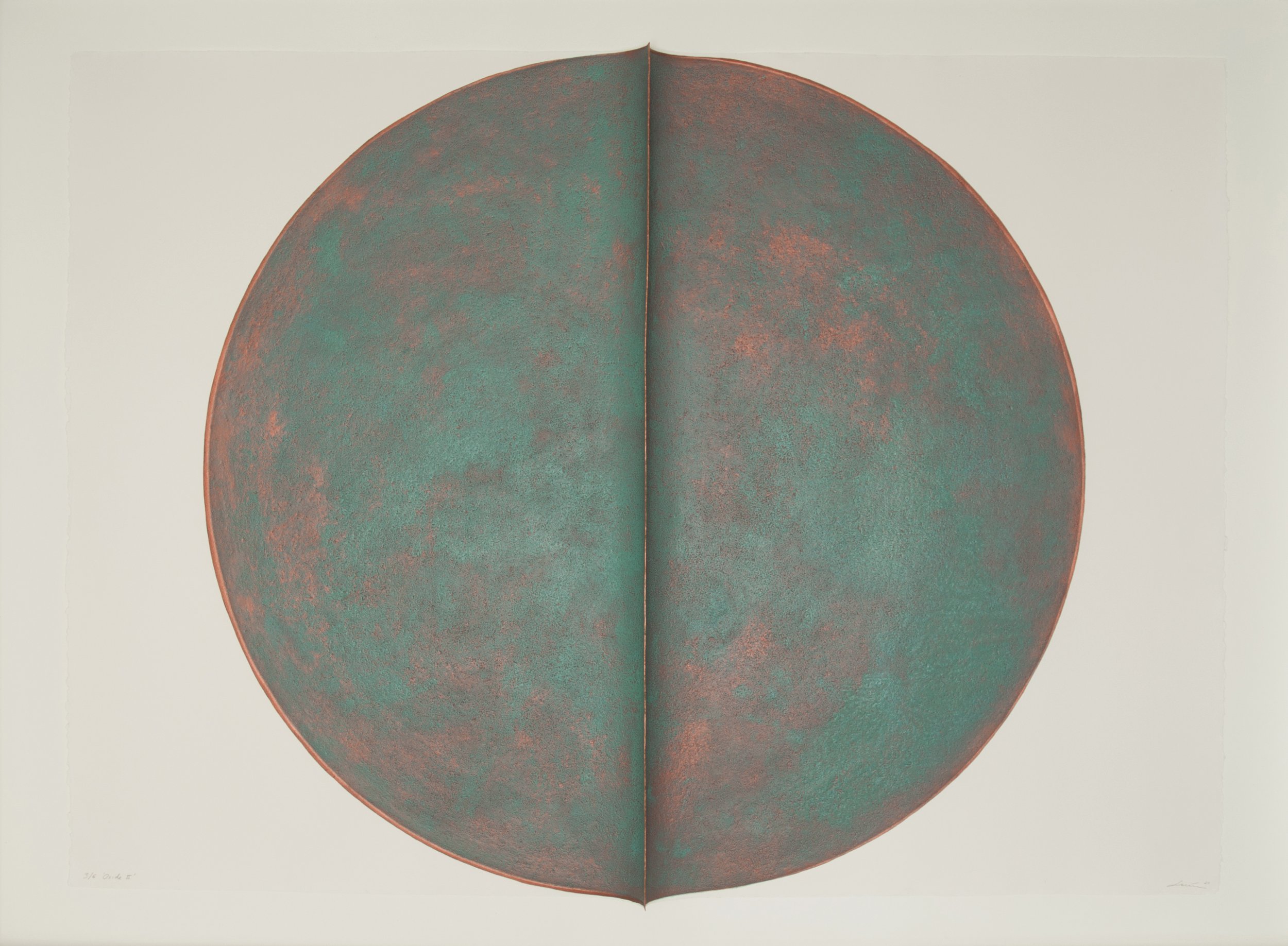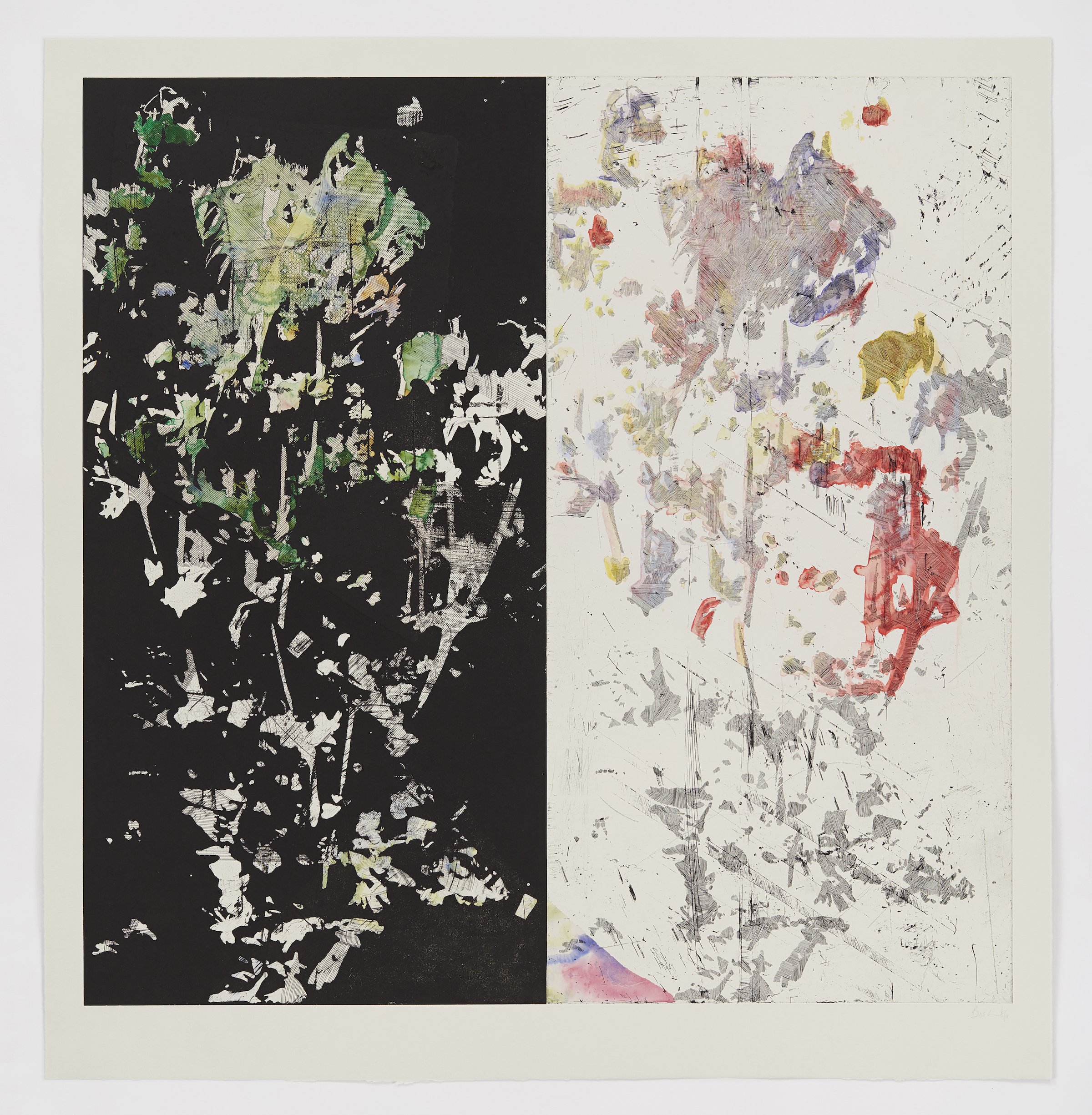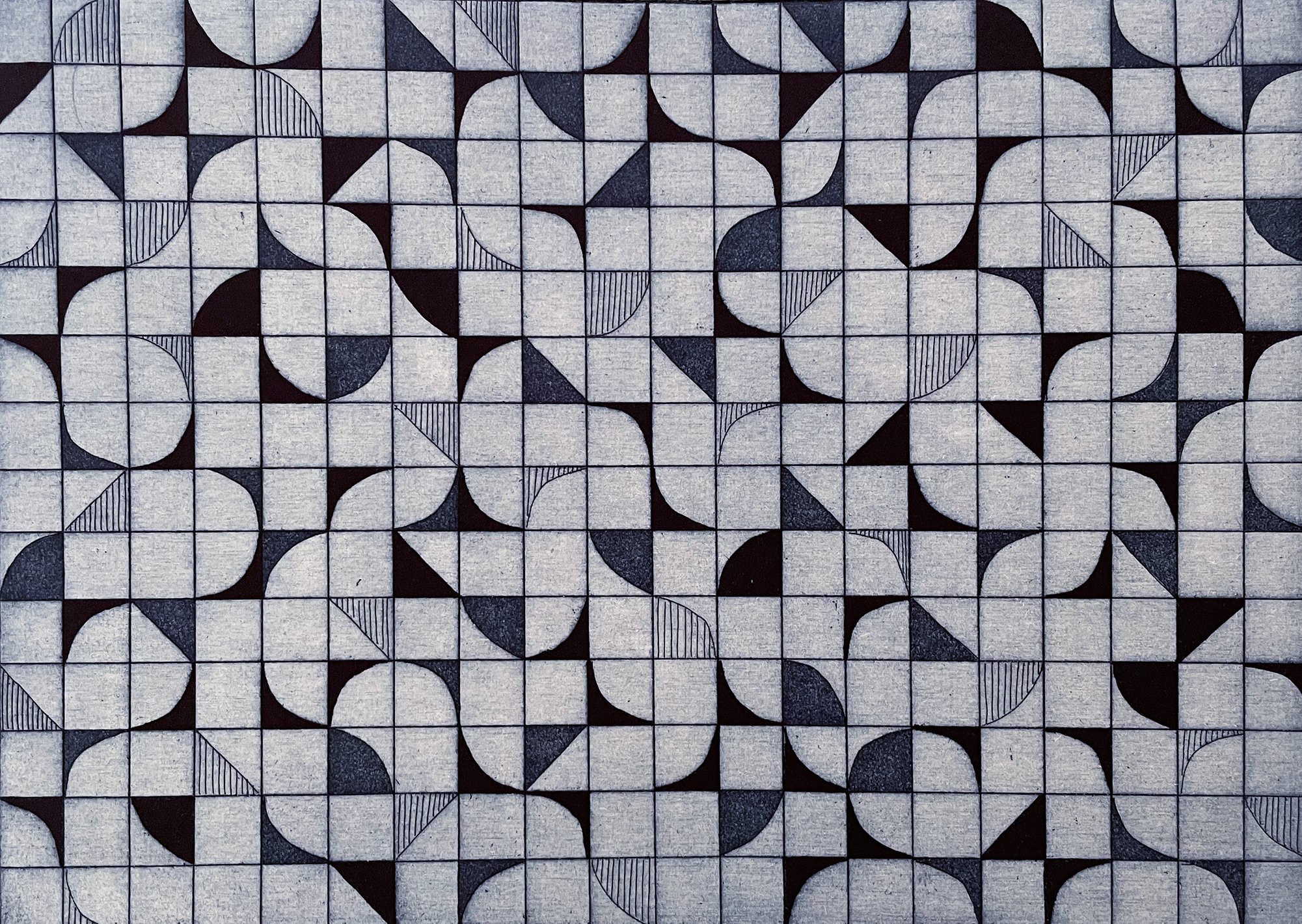Everything you need to know about intaglio printmaking
The intaglio family is a big one, encompassing everything from crisp etchings and beautiful aquatints to velvety drypoint and embossed carborundum. The wonderful versatility of intaglio is probably why it continues to be the most popular medium amongst our WCPF artists year on year. We’ve collated this guide to give you an overview of all things intaglio, starting with the basics.
What is intaglio printmaking?
The word intaglio is taken from the italian intagliare, meaning ‘to incise’ or ‘to carve’. This pretty much sums it up - intaglio printmaking describes any printmaking process in which the image is produced by cutting into the printing plate. Virtually all intaglio plates are printed by similar means - with a roller press, which sandwiches the ink into the paper.
What distinguishes intaglio from the other printmaking families is that the ink forming the design is printed only from recessed areas of the plate; it is the incised line or area that holds the ink and creates the image through applied pressure.
How does intaglio printmaking work?
The artist cuts, scratches or etches their design (depending on which intaglio process they use) onto a printing plate, which is traditionally made of copper, but can also be zinc, aluminium, magnesium, plastics, or even coated paper.
The artist applies ink to the entire surface of the finished plate, ensuring it is rubbed into the recessed areas and incisions.
The artist wipes the plate clean with a rag, or tarlatan. This means the ink is now only present in the recessed areas, ready to be printed. This residual ink is called plate tone.
The artist then places the plate face-up onto the bed of an etching press, laying a dampened sheet of etching paper on top, followed by two felt blankets (which ensure there is even pressure applied).
This is then cranked between two steel rollers, which presses the blankets into the softened paper and forces the paper down into the ink-filled crevices of the metal plate, where it grabs the ink and produces the image.
The artist then removes the blankets at the other end, revealing the final print. The contours of the plate often leave an embossment on the paper, which is called the platemark.
What are the different types of intaglio printmaking?
There are six main intaglio methods:
Etching
Drypoint
Engraving
Aquatint
Mezzotint
Carborundum
Each method has a different way of cutting into the plate, therefore producing a different effect on the final print. Many artists use a combination of two or more methods per artwork.
ETCHING
A metal plate, usually copper or zinc, is prepared with a wax coating (or ‘ground’) which can either be soft or hard depending on the desired result. The artist then draws into the metal plate, thereby removing sections of the ground, before submerging the plate into an acid bath where the exposed metal is ‘bitten’ or ‘eaten’ by the acid. This produces the incised sunken line that receives the ink, so the length of time the metal is exposed within the acid bath will therefore affect the darkness and character of the line.
Tim Southall, Drag Queen on the Rocks (2021)
Jeanine Woolard, Dish of the day, 2021
Drypoint
Drypoint is typically done using copper plates which provide a softer surface, lending itself better to the technique. Similar to engraving, the process of incising is completed with a sharp-pointed tool, however with this technique the metal is not completely removed as the line is cut: rather, the lines have a slightly raised rough edge, known as the ‘burr’ which gives the print a distinctive velvety appearance. The delicacy of the burr means drypoint prints are usually small editions, stopping before the burr is completely crushed under the pressure of the press.
Engraving
A print produced by cutting into a (traditionally) metal plate with sharp tools rather than using acid to eat away the image.
Malcy Delacour, Taussat, Sea Side (2021)
Callum Rose, Beast (2021)
Aquatint
Aquatint is used to create tonal effects rather than lines, often resembling watercolours. The process involves covering the plate with grains of resin called an aquatint ground, which are then melted to fuse the particles onto the plate. The plate is then placed in a bath of acid, which bites into the entire areas between the acid-resistant resin grains, creating an overall grainy, tonal effect. Gradations of tone can be achieved by varying the length of time in the acid bath; longer periods produce more deeply-bitten rings, which print darker areas of tone.
Mezzotint
Similar to aquatint, this technique allows printmakers to achieve soft gradations of tone without using line- or dot-based techniques such as hatching or stipple. The plate is worked with a rocker, creating a rough surface which will hold ink and produce an overall black velvety effect. Having created this texture on the plate, metal scrapers are then used to burnish/flatten out selected areas of the plate, intended to be white in the final image. The artist therefore develops the image from dark to light, manipulating tones to create the final result.
Elena Keenan, We are only foreigners and strangers on the face of the earth (2020)
Rachel Wilcox, Towards Gold Cap, Jurassic Coast (2020)
CARBORUNDUM
In Carborundum printmaking, an abrasive grit (called carborundum) is made with finely ground carbide particles, and then mixed with a strong glue. The resultant paste is used to paint/draw the desired image onto a plate, and left to dry - the abrasive nature of the grit incises the image into the printing plate, which can then be inked.
Due to the carborundum mixture on the plate, the paper embosses when going through the press creating a rich, dense surface. This technique allows the artist to experiment with a direct and more painterly approach to the medium of printmaking, with spectacular results.
Variations within intaglio printmaking
As well as the different ‘cutting’ techniques used, the appearance of the final print can also be affected by the choice of ink; the method of wiping the ink from the plate; and the choice of paper.
Using colour in intaglio printmaking
Multiple-coloured intaglio prints can be made in one of two ways:
à la poupée - a doll-shaped bundle of fabric (à la poupée translates from French as ‘with the doll’) is used to apply different colours to different areas of a single plate, which is then printed in the usual way.
Multiple plates - each plate carries a different colour, successively overprinting on a single sheet of paper.
When was intaglio printmaking invented?
The earliest known surviving examples of intaglio printmaking date back to the 16th century in Europe, centuries after the invention of woodblock printing in Japan. Some historians believe intaglio evolved from goldsmiths' practice of taking an impression of a design they engraved on an object onto paper (in order to keep a record of it).
WCPF21 intaglio printmakers
Now you’ve learnt all things intaglio, here are some of our favourite examples of the versatile medium at the fair…
You’ve learnt about intaglio printmaking, time to learn about its polar process: relief printmaking.


